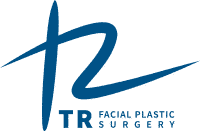Mohs micrographic surgery is a safe and effective treatment for skin cancer. During Mohs surgery, a dermatologic surgeon removes cancerous tissue in small sections in the office setting. The visible tumor and any “roots” extending beneath the surface of the skin are excised. Because it may be necessary to remove many layers of skin to reach these roots, large wounds or scars, often in prominent areas, can be left behind. In these cases, reconstructive plastic surgery can be performed to repair the wound, maintain the structure of the facial tissue and improve the skin‘s appearance.
Types of Mohs Surgery Reconstruction
Reconstruction after Mohs surgery can be performed on the same day of the surgery, or within a few days. The type of repair depends on the location of the tumor, its size, and how far it extends beneath the skin. A patient's preferences and other medical issues may also play a part. Unless a decision is made to let the wound heal by itself, the following techniques are used for reconstruction:
- Stitching the wound closed
- Skin graft (skin is taken from another part of the face or neck)
- Skin flap (skin is shifted from a nearby area)
If the wound is too large or complicated for repair by the Mohs surgeon, a pressure dressing is applied, and the patient is sent to a reconstructive plastic surgeon. Oftentimes, the dermatologist can determine if a wound will be extensive beforehand, and the patient is able to consult with Dr. Ramachandra before the cancer is removed. Sometimes, however, the defect can be unexpectedly large, and the patient arrives for consultation with the defect.
Benefits of Mohs Surgery Reconstruction
Although one of the benefits of Mohs surgery is that it removes only as much tissue as necessary, in some cases, the wound left behind can be unsightly and sometimes the long-term scarring can affect facial function as well, particularly on the nose and under the eyes. Reconstruction after Mohs surgery is beneficial for a patient who seeks to restore the normal appearance and function of the facial structures. Dr. Ramachandra is passionate about restoring patients' form and function after facial skin cancer removal. There is no scarless surgery, and the key to success in these repairs is to place the incisions and scars in the natural boundaries between facial structures. Final results after reconstruction will vary from patient to patient, based on factors ranging from the location of the wound, skin quality and medical issues affecting the ability to heal.
Risks of Mohs Surgery Reconstruction
As with any surgery, risks of Mohs surgery reconstruction include bleeding and infection. Although rare, its specific risks include nerve damage, skin grafting that does not “take,” and permanent scarring.

